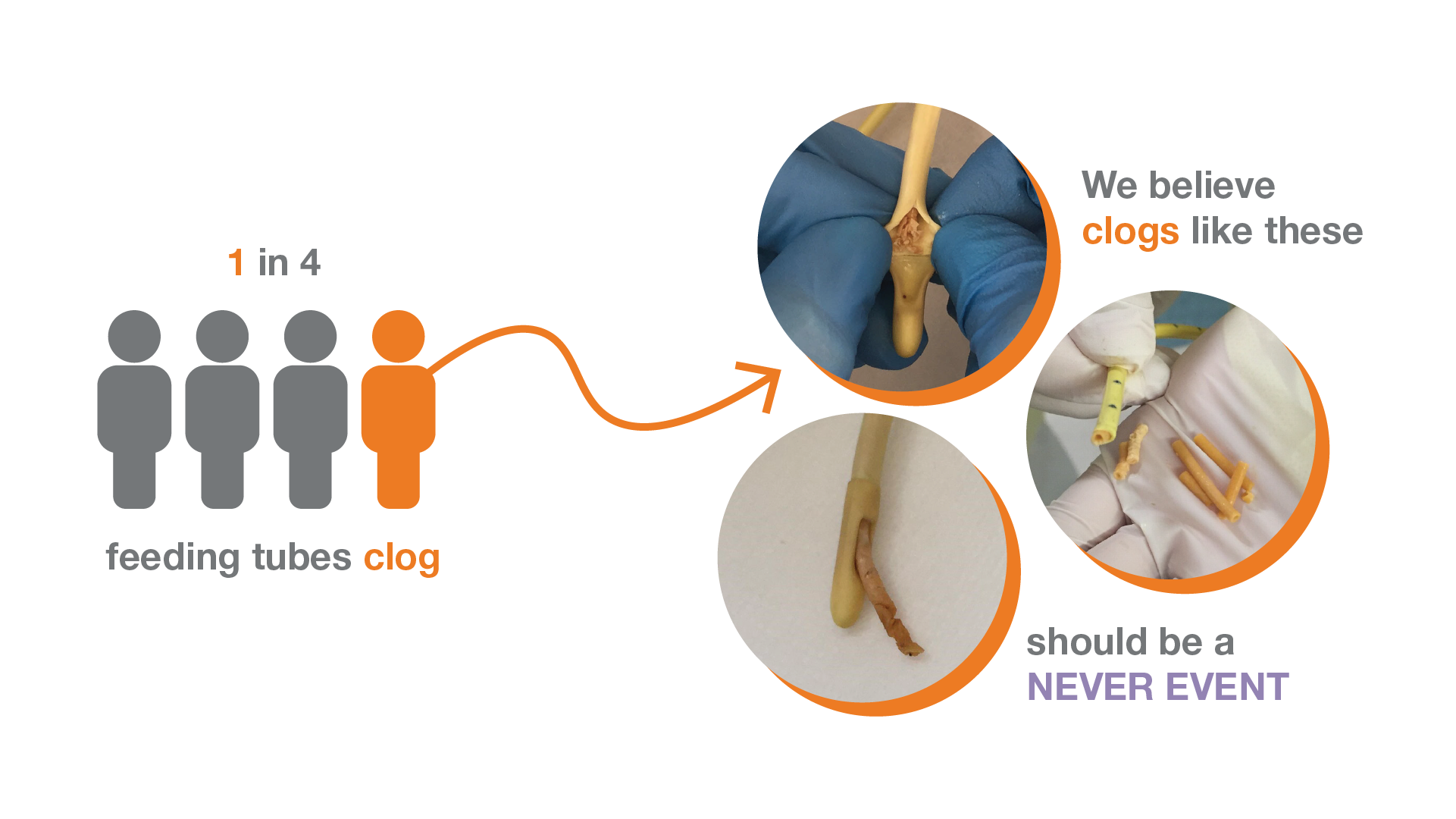A CLEAR Path for Enteral Therapy Delivery: Overcoming Clogged Feeding Tubes
The TubeClear System® uses mechanical motion to address Clogged Feeding Tubes and sluggish indwelling feeding and decompression tubes, helping to restore and maintain tube patency.
“Using the TubeClear System saves time, frustration, and minimizes anxiety around having a clogged feeding tube.”
Linda, a home caregiver
Baltimore, MD

a CLEAR choice for better care
FDA Cleared
Cleared for adults
Indicated for Most Tubes
Indicated for NE, NG, G, J, and GJ tubes; including Traditional G-Jet®, G-Jet® Button, MIC®, and MIC-KEY® GJ tubes
EnFit Compatible
Can be used with legacy or EnFit connector feeding tubes
Used by Licensed or Certified Healthcare Practitioners
Can be used by a RN, LPN, RD, MD, paramedic, and more
No Adverse Events
Over 10 years of use with no reported adverse events in the FDA MAUDE database
Online Training
Online course for training with videos, quizzes, and completion certificate to show competency
“TubeClear is a game changer for clearing blocked NG tubes. Its simple design and ease of use make it a must-have tool for medical professionals involved with feeding tubes.”
Jesse James and Amber Hellstrom
Nutrition Support Dietitians
Williamson Medical Center, Franklin, TN
a CLEAR advantage when declogging
Increases Effectiveness
93% effective against clogged feeding tubes
Reduces Nursing Time
Up to 14x faster at clearing clogged feeding tubes
Reduces Costs
Estimated 59% savings per year for a 500 bed hospital
Works at Bedside
Allow enteral therapy to be delivered as prescribed.
Minimizes Replacements
Use on sluggish and clogged tubes to maintain tube patency
Improves Patient Outcomes
Works on various clog types to help optimize medication, nutrition, and fluid delivery
Clears Various Tube Types
Indicated for use in most NG, NJ, NE, G, J, and GJ tubes
Reduces Transportation
Clears clogged feeding tubes bedside in a facility, reducing the need to transport across the hospital or to a hospital
Keeps Patient Comfortable
Keeps patient comfortable in their known setting while clog is cleared at bedside
CLEAR evidence of success
Skilled Nursing Facility saved $8,000 in one month by using TubeClear.
The TubeClear System was evaluated at NeuroRestorative (Riverton, UT), a Skilled Nursing Facility that serves individuals of all ages with neurological impairment, many require enteral feeding support. The evaluation assessed the prophylactic use of TubeClear as well as the interventional use when clogs occurred.
TubeClear is more effective at clearing clogged feeding tubes than water flushing alone.
Residue on feeding tube walls builds up over time to either impede or stop the flow of required nutrients and medications. By using TubeClear on sluggish tubes, the residue is removed, and enteral therapy is delivered optimally.
Since the introduction of the TubeClear device on our units, our ability to optimize patient care has been enhanced as we are able to de-clog enteral tubes and return to the delivery of therapeutics for our patients
Clinical Nurse Specialist
Academic Medical Center, Columbus, OH

